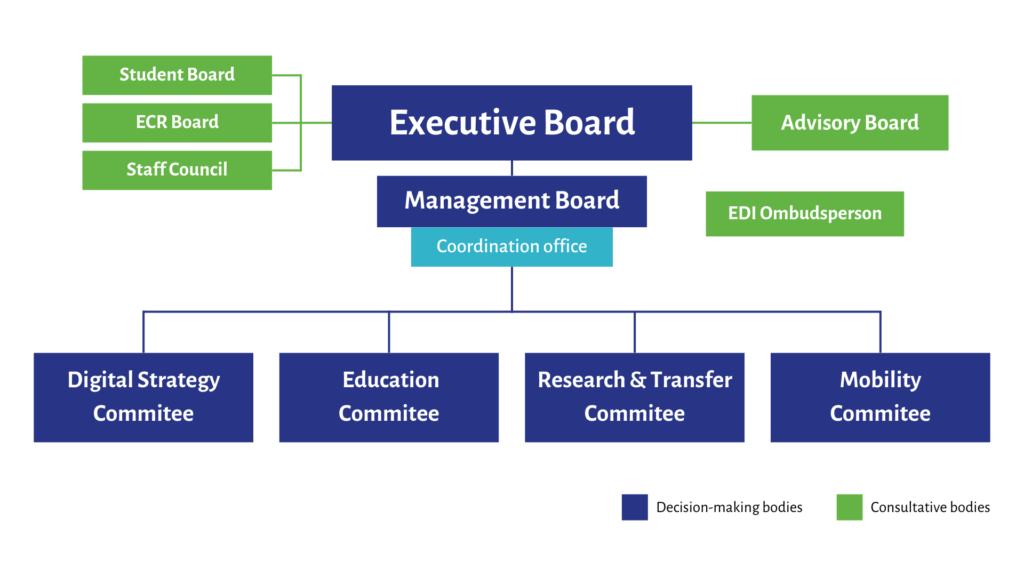The EPICUR governance must live up to its ambition to foster and develop ever closer collaborations among its academics, students and administrative staff and become a full-fledged federation of universities offering them a truly European learning, training and researching experience.
The EPICUR federal governance architecture has been designed to address 3 key challenges and achieve the very ambition of the European University initiative:
- The EPICUR core governance structure must thrive beyond any specifically funded projects. Currently, activities are funded through two European funded projects. From phase 2 onwards, the EPICUR governance must be able to launch and monitor new funded projects and to ensure overall strategic coherence and synergies.
- Integrate EPICUR governance into each members’ internal governance. The deep level of cooperation across all university missions and the increased number of shared activities and resources require both stronger institutional coordination among our members’ governance and a decentralised decision-making in certain domains to the most competent senior management, with clear institutional authority and expertise.
- Facilitate community participation and institutional engagement by developing a whole-of-institution approaches. A participatory governance is key to ensure a true integration and sustain a thriving community across national, linguistic and disciplinary boundaries, united around European values, the challenges pertaining to EDI and a shared sense of belonging.

The EPICUR governance architecture will therefore rely on a set 5 key principles:
- Agility, through lean decision-making processes and clear division of labour for strategic and operational decisions
- Inclusiveness, entrusting decision-making competences for all relevant stakeholders (students, academics and staff) to able to engage and provide significant input
- Efficiency, with regular evaluations of implemented measures, tasks and management to ensure that the needs of all stakeholders are met
- Transparency, to ensure that decision process is clear and information is accessible to relevant stakeholders
- Consent, with efficient coordination processes to ensure that decision-making bodies agree by consent








